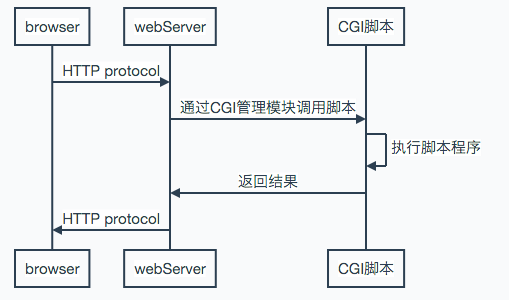RestTemplate post如何传递参数
背景
今天跟同事接口联调,使用RestTemplate请求服务端的post接口(使用python开发)。诡异的是,post请求,返回500 Internal Server Error,而使用get请求,返回正常。代码如下:
HashMap<String, Object> hashMap = Maps.newHashMap();
hashMap.put("data", JSONObject.toJSONString(params));
url = "http://mydomain/dataDownLoad.cgi?data={data}";
json = restTemplate.getForObject(url, String.class, hashMap);
System.out.println("get json : " + json);
url = "http://mydomain/dataDownLoad.cgi";
json = restTemplate.postForObject(url, hashMap, String.class);
System.out.println("hasmap post json : " + json);
结果为:
get json : {'status': 0, 'statusInfo': {'global': 'OK'}, 'data': 'http://mydomain/dataDownLoad.cgi?downLoadData=358300d5f9e1cc512efc178caaa0b061'}
500 Internal Server Error
最后经过另一位同学帮忙排查,发现RestTemplate在postForObject时,不可使用HashMap。而应该是MultiValueMap。改为如下:
MultiValueMap<String, String> paramMap = new LinkedMultiValueMap<>();
paramMap.add("data", JSONObject.toJSONString(params));
url = "http://mydomain/dataDownLoad.cgi";
json = restTemplate.postForObject(url, paramMap, String.class);
System.out.println("post json : " + json);
结果为:
post json : {'status': 0, 'statusInfo': {'global': 'OK'}, 'data': 'http://mydomain/dataDownLoad.cgi?downLoadData=f2fc328513886e51b3b67d35043985ae'}
然后我想起之前使用RestTemplate发起post请求时,使用POJO作为参数,是可行的。再次测试:
url = "http://mydomain/dataDownLoad.cgi";
PostData postData = new PostData();
postData.setData(JSONObject.toJSONString(params));
json = restTemplate.postForObject(url, paramMap, String.class);
System.out.println("postData json : " + json);
返回:500 Internal Server Error。
到现在为止接口调通了。但问题的探究才刚刚开始。
- RestTemplate的post参数为什么使用MultiValueMap而不能使用HashMap?
- 为什么post接口,get请求也可以正确返回?
- 为什么java服务端可以接收POJO参数,python服务端不可以?python服务端使用CGI(Common Gateway Interface),与cgi有关系吗?
何为MultiValueMap
IDEA中command+N,搜索类MultiValueMap,发现apache的commons-collections包有一个MultiValueMap类,spring-core包中有一个接口MultiValueMap,及其实现类LinkedMultiValueMap。显然看spring包。
首先看LinkedMultiValueMap,实现MultiValueMap接口,只有一个域:Map<K, List<V>> targetMap = new LinkedHashMap<K, List<V>>()。 其中value为new LinkedList<V>()。再看接口方法:
public interface MultiValueMap<K, V> extends Map<K, List<V>> {
V getFirst(K key); //targetMap.get(key).get(0)
void add(K key, V value); //targetMap.get(key).add(value)
void set(K key, V value); //targetMap.set(key, Lists.newLinkedList(value))
void setAll(Map<K, V> values); //将普通map转为LinkedMultiValueMap
Map<K, V> toSingleValueMap(); //只保留所有LinkedList的第一个值,转为LinkedHashMap
}
综上,LinkedMultiValueMap实际就是Key-LinkedList的map。
RestTemplate怎么处理post参数
首先查看RestTemplate源码,首先将请求封装成HttpEntityRequestCallback类对象,然后再处理请求。
Override
public <T> T postForObject(String url, Object request, Class<T> responseType, Object... uriVariables)
throws RestClientException {
//请求包装成httpEntityCallback
RequestCallback requestCallback = httpEntityCallback(request, responseType);
HttpMessageConverterExtractor<T> responseExtractor =
new HttpMessageConverterExtractor<T>(responseType, getMessageConverters(), logger);
//处理请求
return execute(url, HttpMethod.POST, requestCallback, responseExtractor, uriVariables);
}
那么HttpEntityRequestCallback是什么样的呢?如下,实际是把请求数据放在了一个HttpEntity中。如果requestBody是HttpEntity类型,就直接转;否则,放在HttpEntity的body中。
//请求内容封装在一个HttpEntity对象中。
private HttpEntityRequestCallback(Object requestBody, Type responseType) {
super(responseType);
if (requestBody instanceof HttpEntity) {
this.requestEntity = (HttpEntity<?>) requestBody;
}
else if (requestBody != null) {
this.requestEntity = new HttpEntity<Object>(requestBody);
}
else {
this.requestEntity = HttpEntity.EMPTY;
}
}
接着看一下HttpEntity源码:
public class HttpEntity<T> {
private final HttpHeaders headers;
private final T body;
public HttpEntity(T body) {
this.body = body;
}
}
public class HttpHeaders implements MultiValueMap<String, String>, Serializable{
......
}
至此,与MultiValueMap联系上了。
基于本次问题,我们不考虑post数据参数是HttpEntity类型的,只考虑普通POJO。那么,postForObject中对post数据的第一步处理,就是放在一个HttpEntity类型(header为MultiValueMap类型,body为泛型)的body中。
再看处理请求的部分:
Object requestBody = requestEntity.getBody();
Class<?> requestType = requestBody.getClass();
HttpHeaders requestHeaders = requestEntity.getHeaders();
MediaType requestContentType = requestHeaders.getContentType();
for (HttpMessageConverter<?> messageConverter : getMessageConverters()) {
if (messageConverter.canWrite(requestType, requestContentType)) {
if (!requestHeaders.isEmpty()) {
httpRequest.getHeaders().putAll(requestHeaders);
}
((HttpMessageConverter<Object>) messageConverter).write(
requestBody, requestContentType, httpRequest);
return;
}
}
通过配置的HttpMessageConverter来处理。
<bean id="restTemplate" class="org.springframework.web.client.RestTemplate">
<constructor-arg ref="ky.clientHttpRequestFactory"/>
<property name="errorHandler">
<bean class="org.springframework.web.client.DefaultResponseErrorHandler"/>
</property>
<property name="messageConverters">
<list>
<bean class="org.springframework.http.converter.FormHttpMessageConverter"/>
<bean class="cn.com.autodx.common.jsonView.ViewAwareJsonMessageConverter"/>
<bean class="org.springframework.http.converter.StringHttpMessageConverter">
<property name="supportedMediaTypes">
<list>
<value>text/html;charset=UTF-8</value>
<value>application/json</value>
</list>
</property>
</bean>
</list>
</property>
</bean>
符合要求的只有ViewAwareJsonMessageConverter,其自定义处理如下。post数据中hashMap只含有data一个key,不含status字段,所以会跳过写的操作,即post请求带不上参数。如果修改代码,当不含status字段时,按照父类方法处理,则服务端可以得到参数。
protected void writeInternal(Object object, HttpOutputMessage outputMessage) throws IOException, HttpMessageNotWritableException {
if(object instanceof Map) {
Map map = (Map)object;
HashMap statusInfo = new HashMap();
//不含有status字段,跳过
Object status = map.get("status");
if(status != null) {
int code = Integer.parseInt(String.valueOf(status));
if(0 != code) {
super.writeInternal(object, outputMessage);
} else {
statusInfo.put("global", "OK");
map.put("statusInfo", statusInfo);
super.writeInternal(object, outputMessage);
}
}
} else {
super.writeInternal(object, outputMessage);
}
}
而使用MultiValueMap会由FormHttpMessageConverter正确处理。
首先判断是否可以执行写操作,如果可以,执行写操作。
@Override
public boolean canWrite(Class<?> clazz, MediaType mediaType) {
if (!MultiValueMap.class.isAssignableFrom(clazz)) {
return false;
}
if (mediaType == null || MediaType.ALL.equals(mediaType)) {
return true;
}
for (MediaType supportedMediaType : getSupportedMediaTypes()) {
if (supportedMediaType.isCompatibleWith(mediaType)) {
return true;
}
}
return false;
}
@Override
@SuppressWarnings("unchecked")
public void write(MultiValueMap<String, ?> map, MediaType contentType, HttpOutputMessage outputMessage)
throws IOException, HttpMessageNotWritableException {
if (!isMultipart(map, contentType)) { //LinkedList中是否含有多个数据
//只是普通的K-V,写form
writeForm((MultiValueMap<String, String>) map, contentType, outputMessage);
}
else {
writeMultipart((MultiValueMap<String, Object>) map, outputMessage);
}
}
既如此,那么post参数为POJO时,如何呢?
POJO也会被ViewAwareJsonMessageConverter处理,在其writeInternal中,object不是map,所以调用 super.writeInternal(object, outputMessage),如下:
@Override
protected void writeInternal(Object obj, HttpOutputMessage outputMessage) throws IOException, HttpMessageNotWritableException {
OutputStream out = outputMessage.getBody();
String text = JSON.toJSONString(obj, features);
byte[] bytes = text.getBytes(charset);
out.write(bytes);
}
如果注释掉ViewAwareJsonMessageConverter,跟踪发现,会报错,返回没有合适的HttpMessageConverter处理。
使用ViewAwareJsonMessageConverter和使用FormHttpMessageConverter写数据的格式是不一样的,所以,post POJO后,会返回错误,但实际已将参数传递出去。
所以,对于我们配置的RestTemplate来说,post参数可以是map(有字段要求),也可以是POJO。即,输入输出数据由RestTemplate配置的messageConverters决定。
至此,我们已经清楚了第一个问题,剩下的问题同样的思路。跟踪一下getForObject的处理路径。get方式请求时,把所有的参数拼接在url后面,发给服务端,就可以把参数带到服务端。
剩下的问题就是python服务端是怎么处理请求的。首先研究一下CGI。
何为CGI
通用网关接口(CGI,Common Gateway Interface)是一种Web服务器和服务器端程序进行交互的协议。CGI完全独立于编程语言,操作系统和Web服务器。这个协议可以用vb,c,php,python 来实现。
工作方式如图所示:
browser->webServer: HTTP protocol
webServer->CGI脚本: 通过CGI管理模块调用脚本
CGI脚本->CGI脚本: 执行脚本程序
CGI脚本->webServer: 返回结果
webServer->browser: HTTP protocol

web服务器获取了请求cgi服务的http请求后,启动cgi脚本,并将http协议参数和客户端请求参数转为cgi协议的格式,传给cgi脚本。cgi脚本执行完毕后,将数据返回给web服务器,由web服务器返回给客户端。
cgi脚本怎么获取参数呢?
- CGI脚本从环境变量QUERY_STRING中获取GET请求的数据
- CGI脚本从stdin(标准输入)获取POST请求的数据,数据长度存在环境变量CONTENT_LENGTH中。
了解CGI大概是什么东东后,看一下python实现的CGI。
python的CGI模块,要获取客户端的post参数,可以使用cgi.FieldStorage()方法。FieldStorage相当于python中的字典,支持多个方法。可以支持一般的key-value,也可以支持key-List<Value>,即类似于MultiValueMap形式的参数(如多选的表单数据)。
参考资料:
我所了解的cgi
Web是如何运行的: HTTP 和 CGI
总结
至此,本问题主要是在于程序怎么传递参数,对于spring restTemplate而言,就是messageConverters怎么配置的。
——————————————————
喵喵还要多努力学习啊~
RestTemplate post如何传递参数的更多相关文章
- Java RestTemplate传递参数
最近使用Spring 的 RestTemplate 工具类请求接口的时候发现参数传递的一个坑,也就是当我们把参数封装在Map里面的时候,Map 的类型选择. 使用RestTemplate post请求 ...
- Feign发送Get请求时,采用POJO对象传递参数的最终解决方案 Request method 'POST' not supported (附带其余好几个坑)
yml: feign: httpclient: enabled: true properties: #feign feign.httpclient.enabled=true <!-- https ...
- Vue 给子组件传递参数
Vue 给子组件传递参数 首先看个例子吧 原文 html <div class="container" id="app"> <div clas ...
- [转] C++的引用传递、指针传递参数在java中的相应处理方法
原文出处:[http://blog.csdn.net/conowen/article/details/7420533] 首先要明白一点,java是没有指针这个概念的. 但是要实现C++的引用传递.指针 ...
- 记一次WinForm程序中主进程打开子进程并传递参数的操作过程(进程间传递参数)
目标:想在WinForm程序之间传递参数.以便子进程作出相应的处理. 一种错误的方法 父进程的主程序: ProcessStartInfo psi = new ProcessStartInfo(); p ...
- 在 Angularjs 中 ui-sref 和 $state.go 如何传递参数
1 ui-sref.$state.go 的区别 ui-sref 一般使用在 <a>...</a>: <a ui-sref="message-list" ...
- Linux线程体传递参数的方法详解
传递参数的两种方法 线程函数只有一个参数的情况:直接定义一个变量通过应用传给线程函数. 例子 #include #include using namespace std; pthread_t thre ...
- 【hadoop】如何向map和reduce脚本传递参数,加载文件和目录
本文主要讲解三个问题: 1 使用Java编写MapReduce程序时,如何向map.reduce函数传递参数. 2 使用Streaming编写MapReduce程序(C/C++ ...
- python 函数传递参数的多种方法
python中函数根据是否有返回值可以分为四种:无参数无返回值,无参数有返回值,有参数无返回值,有参数有返回值. Python中函数传递参数的形式主要有以下五种,分别为位置传递,关键字传递,默认值传递 ...
随机推荐
- Java 接口-抽象类解析
对于面向对象编程,抽象是它的三大特征(抽象.继承.多态)之一.在Java中,可以通过两种形式来体现OOP的抽象:接口和抽象类. 这两者既相似又存异.诸位在初学的时候也会傻傻分不清接口与抽象类的区别,大 ...
- tensorflow elu函数应用
1.elu函数 图像: 2.tensorflow elu应用 import tensorflow as tf input=tf.constant([0,-1,2,-3],dtype=tf.float3 ...
- python函数(2):函数进阶
昨天说了函数的一些最基本的定义,今天我们继续研究函数.今天主要研究的是函数的命名空间.作用域.函数名的本质.闭包等等 预习: 1.写函数,用户传入修改的文件名,与要修改的内容,执行函数,完成整个文件的 ...
- 【JS】ajax 实现无刷新文件上传
一.摘要 最近在做个东西,需要实现页面无刷新文件上传,目前看到的方法有两种 1) 通过隐藏iframe 实现页面无刷新,适用于不关心上传结果 <form target="hiddenF ...
- JARVIS 手机监控局域网内PC
JARVIS 通过反向的Socket连接,实现通过手机(或任何可以发送Http请求的设备)对局域网内PC的监控.在外时可以远程监视家里PC任务的执行情况,甚至远程唤醒家里的PC提前打开游戏也可以实现( ...
- UESTC 30 &&HDU 2544最短路【Floyd求解裸题】
最短路 Time Limit: 5000/1000 MS (Java/Others) Memory Limit: 32768/32768 K (Java/Others)Total Submiss ...
- c++文件编译的一些说明
1,头文件只在于预处理阶段用于完全包含该头文件的内容,每个c文件是一个编译单元,类定义和类声明,变量和函数声明,类内联实现是内部链接,全局变量和函数的定义以及类外部实现是具有全局链接性,假设将所有c单 ...
- 使用Spring Cloud和Docker构建微服务架构
原文:https://dzone.com/articles/microservice-architecture-with-spring-cloud-and-do 作者:Alexander Lukyan ...
- Modular javascript(javascript模块化编程)
<!DOCTYPE html PUBLIC "-//W3C//DTD XHTML 1.0 Transitional//EN" "http://www.w3.org/ ...
- NET中解决KafKa多线程发送多主题的问题
一般在KafKa消费程序中消费可以设置多个主题,那在同一程序中需要向KafKa发送不同主题的消息,如异常需要发到异常主题,正常的发送到正常的主题,这时候就需要实例化多个主题,然后逐个发送. 在NET中 ...
